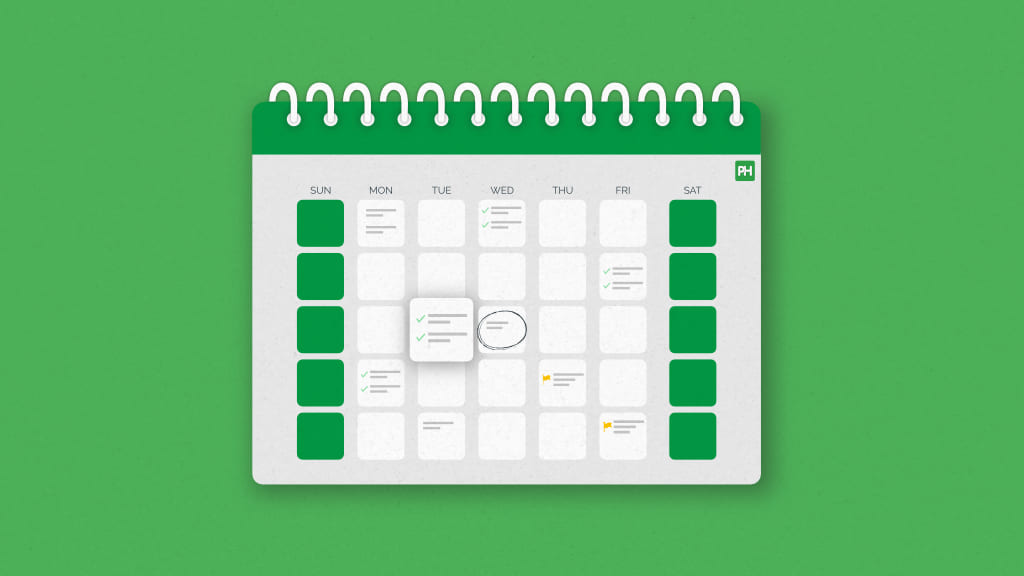Creating a project management calendar is an important step in planning and executing successful projects. A calendar helps teams visualize timelines, track key milestones, allocate resources, and stay on top of deadlines.
Whether you’re managing a simple or a complex multi-phase project, a well-structured calendar ensures that everyone knows what needs to be done and when.
In this article, we’ll walk through the steps to create an effective project management calendar, highlight its benefits, know its types and explore and understand deeply with examples.
What is a project management calendar?
A project management calendar is a visual display tool that you can utilize for organizing and scheduling your project. With a PM calendar, you can keep track of the project’s deadlines and milestones.
It enables project managers and team leaders to share information related to the project timeline with other team members so everyone can track their progress, identify potential bottlenecks, and stay on top of deadlines.
How to create and manage project calendar?
With multiple projects, widely distributed team members, and managing tasks at the same time, a project manager is always on the edge of over and under-allocating tasks to people. Although you can manage your projects on Excel or mails, an intuitive project management and team collaboration software with an inbuilt scheduling calendar can make your life much easier.
Here are some easy steps that you can implement to create and manage your project calendar without any hassles.
- Organize all project-related data in one place
Many project teams spend their valuable time switching tools to access project-related data. This results in a lot of confusion and poor collaboration with peers on tasks and projects.
A scheduling calendar helps you bring and organize all your tasks, events, and milestones in one central place. You can visualize all calendar data in one place, which makes it easier for you to stay on top of deadlines and avoid missing out on high-value tasks within the project.
- Break down the project into smaller tasks
When you have a big project in your hands, it can overwhelm you and your team members. However, you can make things easier when you break down the project into smaller, manageable tasks and subtasks.
A PM tool helps you create tasks, sub-tasks, and manage them easily. You get a neat, listicle view of all tasks, which further helps you with analyzing different types of tasks, time required to complete them, and assigning them accordingly to groups and individuals.
- Assign tasks to team members
You cannot assign tasks randomly to team members. Doing so is likely to bring you an avalanche of issues, like missed deadlines, poor quality of work, stressed-out employees, etc.
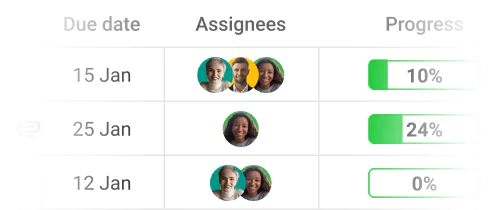
A project calendar tool heps you visualize all your available resources, the team’s workload, and let’s you assign tasks accordingly. Fair and even workload distribution results in a happier, engaged workforce that leads to noticeable improvements in the overall productivity and quality of work.
- Set deadlines and avoid delays
Missing deadlines is any project team’s worst nightmare. Surprisingly, many individuals miss deadlines because there are no deadlines set. Instead, there are vague deadlines. For instance – The task is supposed to be completed within this week. This leaves task assignees confused and relaxed.
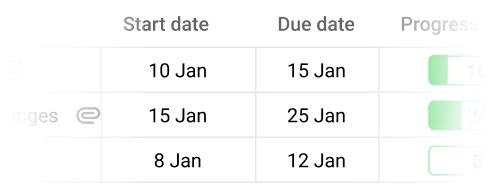
Using a time tracking tool, you can add important details to tasks, like start-end dates and time estimates to fix job accountability among team members. If the task is not finished on the due date or exceeds the estimated time, you can identify the reasons for project delay.
- Communicate and collaborate in real-time
Communication failures can result in misunderstandings among team members, delayed tasks, poor quality work, and even loss of revenue. Using emails and video conferencing for exchanging information takes a lot of time and should only be used in conjunction with other communication modes.
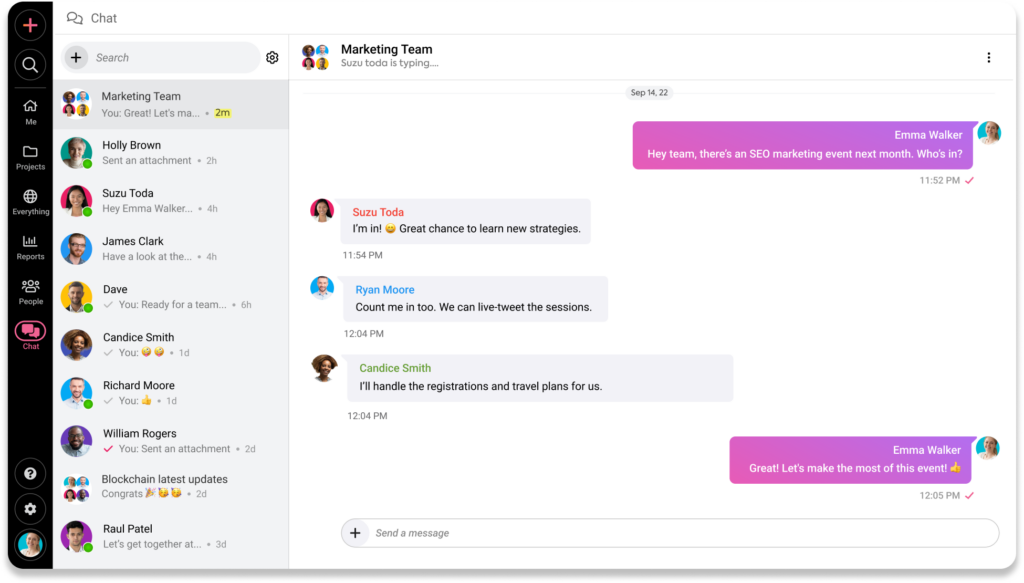
A project management tool with communication features, like Instant Chat, Discussions, Real-time notifications, @Mentions, and Announcements enable instant communication between project managers and team members. Smooth communication flow prevents vital information falling through the cracks and prompts timely actions to keep projects on track.
- Choose different views to track progress
Many projects miss deadlines because project managers lack a comprehensive view to track their progress at every stage, from the start to finish. They are unable to identify bottlenecks and fail to check the progress of individuals and groups.
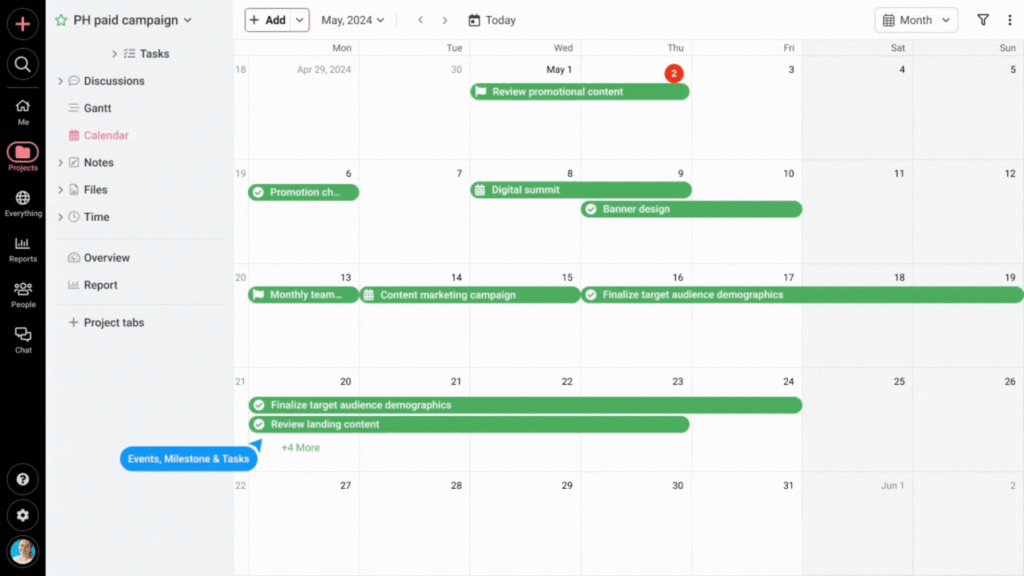
Along with a calendar view, PM tools offer multiple project views to managers that helps them visualize tasks and project progress in a way that suits their tracking requirements. Boards let you check the current status of tasks, Gantt view lets you check task dependencies and critical path, Table view offers a neat, listicle view of all your to-dos and their progress, and the Calendar view lets you visualize all your tasks, events, and milestones in a single calendar.
What are the key features of a project management calendar?
A project management calendar is not a traditional calendar, but it has many more features embedded within it. This is why you should always check out the different features that a project calendar provides you. Here are some essential features that should be there in your project management calendar:
- Task assignment and deadline: This helps you to assign tasks and check the deadlines of each task within your project calendar. It gives you a clear vision of who is responsible for what.
- Dependencies and milestones: This feature will help you to understand the relationship between the tasks by checking what tasks depend on one another.
- Collaboration and sharing: It is an important feature that helps you and your team leave a comment or note, as multiple users can access and update the calendar.
- Integration with other tools: Sometimes, you or your team use different tools for different activities, so the calendar must integrate easily with tools like CRM or collaboration.
- Reflect changes on the go: When you comment on the project calendar or send a message to your team, it should reflect simultaneously on their end. That’s why this feature is vital.
- Supports scheduling: There are multiple tasks, such as one-time, recurring tasks, and rollover tasks. So, a calendar for project management must have a scheduling feature to help you out.
- Multiple task viewing option: A project calendar with multiple task views will help you to look at different perspectives, like daily, weekly, and monthly views. Kanban and Gantt chart views are other important views that should be present in your project calendar.
- Color coding labels: This feature of the project management calendar will not only make the calendar interactive but also make it easy to distinguish between different tasks, such as red color for urgent tasks, green for completed tasks, yellow for tasks with pending approvals, and blue for ongoing tasks. Using this feature, you or your team can easily prioritize your tasks.
Tips for using a project calendar effectively
No matter how many or how good tools you use with your project calendar, using a calendar will become ineffective if you do not use it properly. Here are some tips that will help you utilize a project calendar effectively:
- Assign tasks with ownership: Every task on your project calendar should have a designated owner responsible for completing the task.
- Keep it simple: Only use the essential details on your calendar, as putting too much information will sometimes overcomplicate the calendar.
- Use color coding: Color coding will help you better organize tasks based on priority, ongoing, under review, and completed tasks.
- Regularly track and monitor calendar: You have to schedule a regular review of your calendar to track and monitor tasks and analyze how well your project tracking calendar is working.
- Encourage collaboration: To effectively use your project calendar, encourage your team to check and update task statuses regularly. Real-time updates will keep everyone on the same page.
- Automate recurring tasks: There are many tasks that you have to assign every week or month. You can automate such recurring tasks and save time.
- Share project calendar with stakeholders: Sharing the project calendar with your stakeholders will help them check the project updates without holding a face-to-face meeting.
What are the benefits of a project calendar?
Traditional calendars are useful for creating a schedule and visualizing the passage of time, but they are not ideal for project teams managing multiple projects simultaneously and making adjustments to the schedule due to sudden changes from the client’s side.
Using a project management calendar offers several benefits, which are as follows:
- Clear visibility of tasks
You can visualize all your tasks, events, and milestones in one place. Project managers can see all tasks at a glance as well as which team member is supposed to work on what and when. You can monitor your team members’ progress and identify bottlenecks in time before it derails your project off track.
- Improved Communication
A project management calendar is easily shared and accessible by teams across various departments within the organization, which significantly improves internal communication for improved coordination on work.
Team members can seamlessly collaborate on different tasks scheduled within a calendar while project managers and supervisors can convey vital information (updates and feedback) to team members and vice versa.
- Better Planning
A project planning calendar lets project managers accurately plan their project’s timeline by planning and organizing tasks in a sequential manner. You can set task dependencies and schedule tasks with clear deadlines, which also gives clarity to task assignees.
Also, project managers can make different calendars for important meetings, one for project deadlines, and another for work events to keep your work life more organized.
- Enhanced collaboration
A project calendar plays an important role in improving team collaboration, especially among remote teams.
You can easily share real-time calendar updates with other team members and stakeholders, which means your clients can easily have a Bird’s eye view of your project schedule and upcoming key dates.
- Efficient Resource Allocation
Efficient resource utilization remains one of the most important objectives of project managers across various industries. By using a project calendar, project managers can optimally utilize available resources by allocating tasks to the right people, after checking their workload.
Fair, even workload distribution encourages employee engagement and better job satisfaction, which makes them more productive and loyal in the long-term.
What are the types of project management calendar?
There are primarily 4 types of project management calendars that are used by project managers across various industries.
- Task calendar: As the term suggests, a task calendar is a visual display of all the tasks that fall outside the project scope. It is designed to complete one-off tasks.
For example, installing servers in a client’s building is a one-off task that needs scheduling and resources.
- Resource calendar: The resource calendar displays dates, times, and days planned to be allotted to a specific resource, which can be human or machinery.
For example, John (the resource) is available for the first two weeks of March and absent from work for the remainder of the month.
Another example is installing servers in a client’s building is a one-off task that needs scheduling and resources.
- Timeline calendar: The timeline calendar offers a clear overview of all tasks, like responsibilities, deadlines, and dependencies. You can see what needs to be done and when. This calendar is quite simple and you can determine which tasks are urgent and which ones can be postponed or delegated.
For example, you can see what are start-end dates for different tasks, dependencies, and which tasks need to be completed earlier and which ones to work on later.
- Base calendar: The base calendar is the main calendar template that is used to create calendars for your resources, programs, tasks, etc. It displays vital task information such as work days, work hours, and off days.
For example, Task A is scheduled to start on Monday, end by Thursday, work hours will be 9 am to 6 pm, and Friday, Saturday, and Sunday will be off days.
Examples of project management calendar
A project calendar can be used quite differently by different organizations. They can use it for marketing, event planning, software development, or any other need of their team. Here are some examples of calendars that can simplify operations and improve efficiency for different teams.
- Shared team calendar: This calendar is used for team-wide scheduling, including task assigning, easy collaboration, deadline and availability tracking.
- Editorial calendar: The content marketing and social media teams mostly use an editorial calendar for scheduling blog posts, social media updates, and marketing campaigns. It helps to plan topics, assign writers, and track deadlines.
- Event planning calendar: An event planning calendar helps not only in planning but also in coordinating events, conferences, and webinars. It can also be used to track the deadlines of logistics and guest management.
- Agile sprint calendar: The software development teams usually use this calendar to organize the development cycles into short sprints.
What are the limitations of using Excel for managing project calendar?
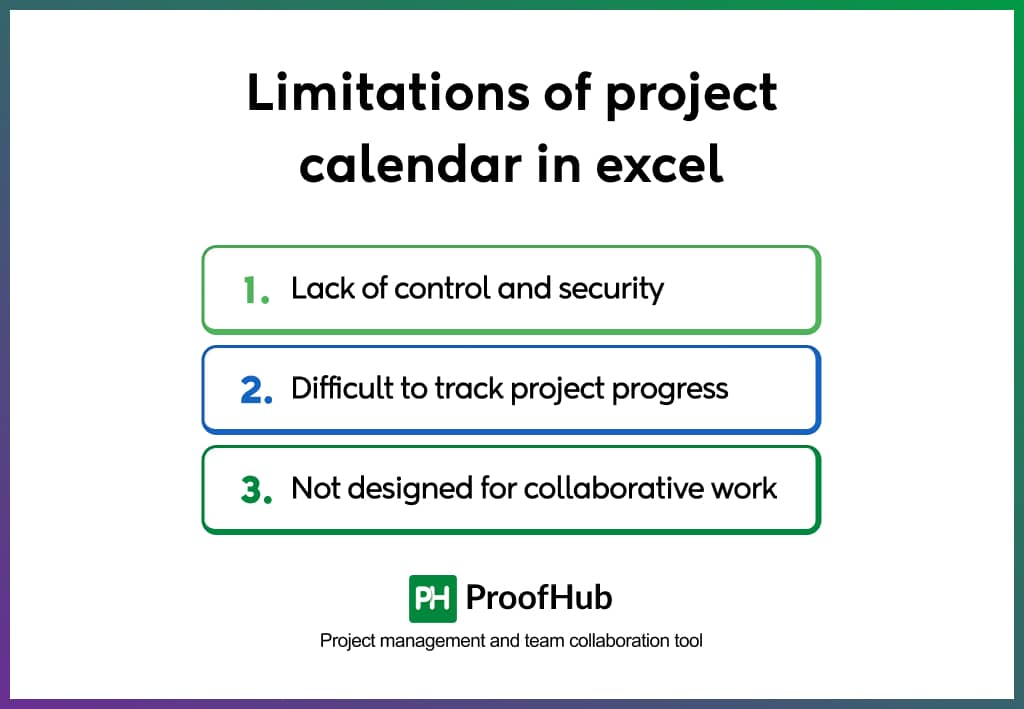
Excel is one of the all-time favorite tools that companies have been using for creating spreadsheets. However, it seems that Excel lags behind a fully-equipped project management calendar due to the following limitations:
- Lack of control and security: Excel is not user-friendly, and the app slows down if the data is too huge. Also, it is a stand-alone tool that does not offer adequate control as there’s always a risk of errors when manual changes are made to Excel.
- Difficult to track project progress: Excel is not ideal for project management teams because there’s no way you can track project progress due to scattered information across multiple files.
- Not designed for collaborative work: Excel does not offer essential collaboration tools that both in-office and remote teams require today. For instance – Instant chat, File sharing, Online proofing, Boards, etc. Users cannot check the status of a task or know what to work on next.
What are the limitations of using Google Calendar for managing project calendar?
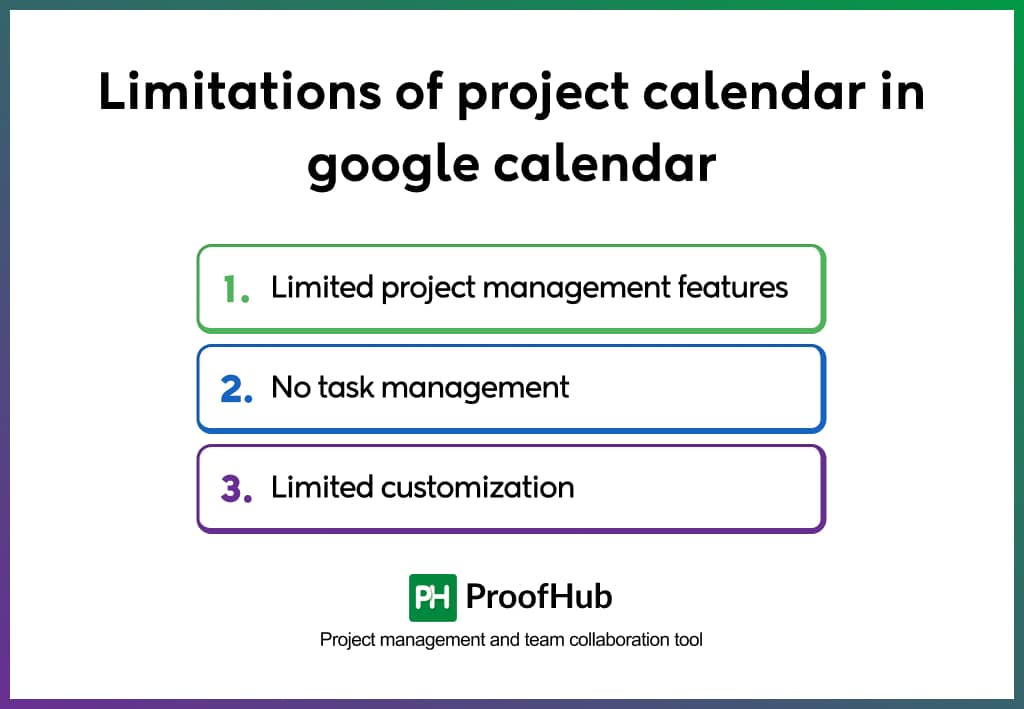
While Google Calendar is a great tool for scheduling meetings and appointments, it has the following limitations when it comes to project management.
- Limited Project Management Features: Why would project teams use a limited tool such as Google Calendar when a powerful PM software application offers a wide range of features in a centralized location? Google Calendar lacks many essential features that project teams require in daily work.
- No Task Management: Google Calendar does not provide task management features, making it difficult for project managers to assign tasks and responsibilities, set deadlines, and track their progress at every stage.
- Limited Customization: Google Calendar provides limited customization options and its interface is too plain and underwhelming for users.
Conclusion
Creating a project management calendar is akin to laying a strong foundation for a successful project. It is like creating a clear roadmap for the project journey, with all important tasks, milestones, dates, and assignees neatly marked in one place.
Project managers and team members can refer to this calendar to plan their work while staying aligned with project goals.
You’d need the best project management and team collaboration tool, like ProofHub, to create a project calendar that allows you not just to schedule tasks and assign them but also to track project progress, identify bottlenecks, and make necessary adjustments to ensure deliveries are made on time.
